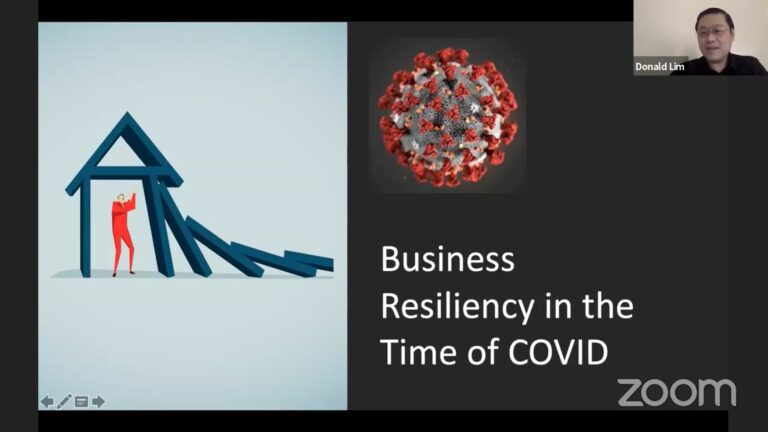Truelogic Episode 92 Recap: Local Languages in the Digital Campaign

Podcast Transcription
Berns San Juan: Let’s talk about heuristics. Just kidding. That’s a big word. Let’s talk about the impact of local languages in digital campaigns. Hi, and welcome to another episode of the Truelogic DX Podcast. Today, we’re going to talk about localized marketing. Big word alert, I’m going to say it again. There’s a cognitive bias called heuristics. And if I were going to explain what it is in essence, it says that our brains like to be able to make decisions using the least amount of effort. In short, we’re very calorie-averse, right? We don’t like utilizing a lot of energy when it comes to decision-making. Our brain tends to take shortcuts.
When I develop products and services, which means it includes the reports that the end clients ultimately see, there are two key questions that we try to address whenever we build them. The first question is, who is this report for? Who gets to see it? And then the second question is, what’s the key message? The trick here is to try to communicate the message in the simplest possible way with the client doing the least amount of work. This is where local languages come in because how a client will perceive a report is the same way an audience will perceive a marketing message.
So take for example, did you know that the average human being approximately speaks at about 150 to 180 words? I probably do a little faster because I tend to speak fast, but the average human person reads about 300 to 500 words per minute. So we speak at 150, but we read at 300 to 500. And by the way, 500 there is not, the high. 500 is the average for everybody else. If you’re reading less than 500, the reading speed is a bit slow. But the average person reads about 300 to 500 words.
That means we perceive faster than we speak, right? And we tend to read faster and perceive faster in languages that are native to us. This is why a Japanese person will be able to read Japanese super quickly, but will be challenged when it comes to reading English, and the same way we read English so easily. But when we try to learn a new language, we find it so difficult. Your brain doesn’t read, it fills in gaps. The trick to effective marketing is not to sound smart or sophisticated. The trick to effective messaging is Splenda. It has to be calorie-free.
Linguistics and the Philippine Landscape
The Philippines is a melting pot of languages, right? You’ve got Tagalog, Cebuano, Ilocano, Hiligaynon, Waray, Kapampangan, Pangasinense. Linguistic diversity presents an opportunity in the same way that it offers a challenge. So there is as much opportunity there as there is challenge. So take for example, there are a lot of studies that show that if I average those studies out, about 75% of consumers prefer to buy products in their native language.
In a country like the Philippines, what this means is tailoring content to a variety of local languages can significantly impact how you engage your consumers and your audiences. A survey revealed that content in Filipino, sees 50% increased engagement in terms of traffic in regions where that language is predominantly spoken. So what do I mean? You have a marketing campaign in Visayan, you land them on a Visayan landing page, and they’re more engaged, right? Compared to non-localized websites. It’s a very diverse linguistic landscape.
Now, here’s the caveat. I’m not advocating for, oh, does that mean when I make a marketing campaign, I have to translate it into two dozen dialects? Nope, not. But what I am saying is, for a major dialect, like for example, Cebuano is a major dialect or Visayan is a major dialect. If you trim it down to its simplest version, which in my opinion would be Davaoeno, all Cebuanos will understand Davaoenos because the Davao version of Cebuano is simpler, that’s relevant because then you’re capturing a large chunk of an audience, right?
So if you try to create a marketing campaign, let’s say in Waray, and you realize that less than a million people will understand that effectively, then it’s probably not worth it to try to customize your campaign in that language. I’m also not saying that all campaigns need to be translated into all dialects. You have to pick and choose. The more a specific product targets a specific audience, the more you must cater to the localized language.
Successful Language Localization in Marketing Campaigns
Localization is not transliteration. You’re not translating word for word for word. It is also not just, translation, right? It’s more than just translation. You’re not taking the English words or the English sentences and then converting them into Visayan sentences, Tagalog sentences, and so on. It’s about adapting your message so that the context of that message is the same in that local area. It’s about making the message resonate culturally. So for instance, a campaign in Cebuano may include idioms that only a Cebuano would understand, right? And I’m sure that there probably are. There are probably idioms, sayings, proverbs, and parables in local languages that are only true in those local languages.
Brands using localized languages on their social media posts have reported about a 40% increase in engagement rates compared to their English-only posts. And take note, email marketing campaigns that are localized in languages like Tagalog or Visayan see an average open rate of 30% more than your ever-ubiquitous English mailer. So personalization does have an effect, right? Like especially since we’re spammed so frequently in English the chances that seeing something in the local dialect allows us to perceive it to be more authentic, less scam. Right?
Now, let’s talk about balancing the local language and English. While local language usage is key, I would say English remains an important language in the Philippines, widely because it’s still the main medium of instruction and it’s still the main medium of communication in business, and education. And so you sort of have to balance out the way you adapt culturally to localized languages.
SEO and Local Language Optimization

So let’s use SEO as an example. I have had this question before, like where clients will say, is it worth it for us? Is it worth it for us to market in Filipino? Is it worth it for us to duplicate this page in the Filipino language, in Taglish, or just keep it in English? Right. And the answer to that from an SEO perspective is it depends on the search volume. Is there, a search volume in the local language?
And you might be surprised, right? Like in most cases, the English keywords tend to have higher search volumes than the local keywords. Except, except for, I would say health and wellness-related issues. For example, keywords like lagnat, sakit ng ulo, trangkaso have pretty high search volumes in the Philippines like even, compared to their English counterparts, like flu, and fever. They have pretty high search volumes. And so I would say if you’re in the pharmaceutical industry and there is a local term for the condition, you might want to optimize for both, like, just as an example. But we would never tell our client, okay, you’re ranking for trangkaso, no need to rank for flu. Yes, you do. You need to rank for both.
In a previous episode, I talked about how 38% of all of the transactions are done by the people in the NCR, right? And they are more likely the ones that perform searches in English. And so you will also want to be sensitive to them. So in most cases, I’ve never run a pure Filipino campaign, but we have run campaigns where a portion of the campaign was done in Taglish or entirely in Filipino because of its target. I’ll give you guys two examples right after this section.
But a campaign that skillfully blends English with a local language can see higher brand recall, can gain the benefit of being optimized for both the English and the Filipino language, and can gain the benefit of the engagement that you expect coming from localized languages. Assuming you use Taglish creatively, right? Like not in a crass way, not in a trashy way. It helps increase 25% brand recall.
Now the challenge lies in knowing when to use local languages and when to opt for English. You have to study your [target] demographics, their location, and the content type that resonates with them, these are sort of crucial factors in your decision-making. So don’t do a Taglish campaign or a Tagalog campaign because the boss says so, right? You have to back it up with data.
Leveraging Local Languages in Digital Campaigns
On two occasions and for two different banks, we ran a generalized campaign for the bank and you know, the generalized campaign is auto loans, housing loans, credit cards, deposits, checking accounts, and online banking. Like that’s the typical jazz you get with banking. But on two separate occasions, maybe separated by five years, I would say, the request of the bank was, or at least the business call that we were given was, we need to increase our international craft, which, you know, for us, we sort of found that weird, right? Like what? But you’ve got like 1.5 million visitors. You’ve got 1.2 million visitors. Why would you want international visitors to go to your website?
And then they clarified, okay, let me clarify. We want traffic from Balikbayans and OFWs and then of course it makes sense. So then of course it makes sense. Like all good SEO companies, like all good digital marketing companies, we started doing our research. But our shot of the hip recommendation was, okay, let’s build a target page for that. Let’s build a landing page for that. Here’s the content, here are the keywords we’ll use, and here’s how it will look like.
And then sure, Google understood the context of what we did. We complimented it with ads. It appeared on the first page of the search lickety-split because these are very well-respected banks. You optimize them for, I don’t know, ragdoll. They’ll rank in like seven days. But essentially we built the pages and we ranked the pages. But we didn’t get a lot of traffic or at least nowhere near what we expected. The traffic was nowhere near what we expected it to be. Far from it. It’s so undershot, super below the expectation. And we were wondering, okay, what’s going on? What’s going on?
So we decided to do some keyword research and keyword research means you guys got to try this if you don’t, we did keyword research on Filipino words in Kuwait and what’s the search volume there? And Filipino keywords in Saudi Arabia. And we took a look at, okay, what’s the search volume there for these Filipino terms? And we did the same for Singapore, Hong Kong, and the US. Our initial assumption was, okay, I get it. I get that OFWs tend to do their searches on their devices and they tend to do their searches not in Arabic, not even in English. They tend to do it in Filipino, right?
Like Pinoys abroad, OFWs tend to do their Google searches in Filipino. They are as likely to Google Bahay at lupa as much as they are house and lot. Right? Like, and in some cases for some keywords, they predominantly do searches in the Filipino term. I’ll give you an example of a Filipino term that you cannot beat in any other language. Padala. Right? Like impressive, impressive. So that was a bit of insight. And when we realized that, you know what? An English page with English content will never rank and will never perform for these Filipino terms because the Filipino pages don’t exist.
So we did a little bit of, you know, with a little bit of kung fu, we built a duplicate page, not in Filipino, in Taglish. We built it in Taglish, but we optimized it. We made sure the URL, the H1, the metas, and the content, all mentioned the Filipino terminology, and all mentioned the Filipino idea in the Filipino words that we wanted to optimize for and that we wanted to perform for. And then bam, sure enough, we started getting super relevant traffic coming from the East, we started getting super relevant traffic coming from Singapore and Hong Kong. And we didn’t expect it but Balikbayans also tend to search in Taglish or Filipino.
That I found mind-boggling because my initial bias was, okay, they’re in the US, surely they must be Googling in English, right? But apparently, the level of nostalgia among Balikbayans is so high that they still perform searches in Taglish or Filipino. So this is an example of the application and the benefits that you do with hyperlocalization. I’ll give you another one, one of my favorite localized campaigns. If I’m not mistaken, this is circa 2018, right? Do you guys remember the Orokan campaign? That was brilliant.
The Google Ads were in Filipino. The landing pages were in Filipino. I still remember the text of the Google Ad, right? It was so cheeky. The text of the Google Ad was, “Please, bumili na kayo. Ang hirap, hirap gumawa ng Google Ads.” Brilliant! Like brilliant, brilliant marketing. One of the other campaigns that I remember was the Nomi campaign that GIGIL did for Orocan where this boy is getting chased by a dog and he’s got this Nomi which is like a water jug, Orocan’s water jug, and it’s like less than 300 pesos. And he’s dragging it through dirt and the field and then he climbs a tree to keep away from the dog and then the rolls reverse.
Now the dog is the one drinking from the jug, the boy is angry and he chases the mascot dog through the field to get back his Nomi. Brilliant but the messaging was in Filipino. The messaging was in Filipino as by the way is still a lot of Orocan messaging. I have seen Orocan make the same attempt, like the same jester messaging on billboards and it doesn’t work. And this is what I mean when I say contextuality where some things are just funnier in Filipino. Some things are just funnier in Filipino. These are just two examples I gave you three because two banks did that. So there are three examples of how you can utilize the localized language to the benefit of your brand, to the benefit of your campaign, to the benefit of your business goals.
So in conclusion, leveraging local languages in digital campaigns is more than just a marketing strategy. It’s a way to genuinely connect, to authentically connect with your local audience, you know, Filipino or otherwise. Understanding and respecting linguistic diversity can lead to a more, I would say, meaningful and personal relationship with your audience and can get them to look forward to the marketing content that you put out. Case in point, my case with Orocan, right? I always look forward to their content. It was just, you know, super entertaining.
So with that, I’ll conclude this episode and I’ll thank you for joining me for the past couple of minutes where we’ve talked about the impact of local languages in your digital campaigns. At some point I’m probably going to make an episode in heuristics, right? Like we’ll do a big word campaign. But thank you for joining us for another episode of the Truelogic DX Podcast. If you enjoyed this conversation on an exploration of languages in marketing, don’t forget to subscribe.
We’ll probably talk about other stuff that will be interesting to you too. We’d love to hear your thoughts. Truelogic DX is available on Spotify, Google, and Apple accounts. I hope you join us for another episode as we give you guys more insights into this fun dissecting world of digital marketing in the Philippines. Thank you to our marketing team at Truelogic and our friends at Pod Machine for continuing to power these episodes. And I’ll see you on the next one.










